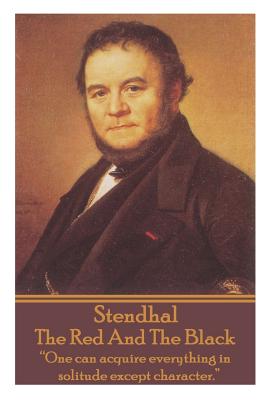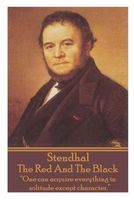- Welcome to FictionDB, Guest
- | My Account
- | Help

Stendhal - The Red and the Black — Stendhal

Marie-Henri Beyle was born on January 23rd 1783 in Grenoble, Isere. He is known to us all by his pen name; Stendahl. He spent much of his childhood in an unhappy state, mourning his beloved mother who died when he was 7 and disliking his unimaginative father. His early career was in the military and theatrical worlds of the First French Empire. He was an auditor with the Conseil d'État and took part in the French administration and the Napoleonic wars in Italy. He also travelled extensively in Germany and was part of Napoleon's army in the 1812 invasion of Russia. After the 1814 Treaty of Fontainebleau, he left for Italy and settled in Milan. He adored Italy and was to spend much of his career there, serving as French consul at Trieste and Civitavecchia. Stendhal was a dandy and wit about town in Paris, and an inveterate womaniser, obsessed with his sexual conquests. His genuine empathy towards women is evident in his books. One of his early works is On Love, a rational analysis of romantic passion that was based on his unrequited love for Mathilde, Countess Dembowska, whom he met while living at Milan. This fusion and tension between, clear-headed analysis and romantic feeling is typical of Stendhal's great novels. Indeed Stendahl was a forerunner of the Romantic Realist movement. Stendhal suffered miserable physical disabilities in his final years though he continued to produce much of his most famous work. To treat his syphilis he was taking iodide of potassium and quicksilver. A treatment whose side effects were measurably worse than the effects of the syphilis itself. Stendhal died on 23 March 1842, a few hours after collapsing with a seizure on the streets of Paris. He is interred in the Cimetière de Montmartre.
Genres
Click on any of the links above to see more books like this one.
